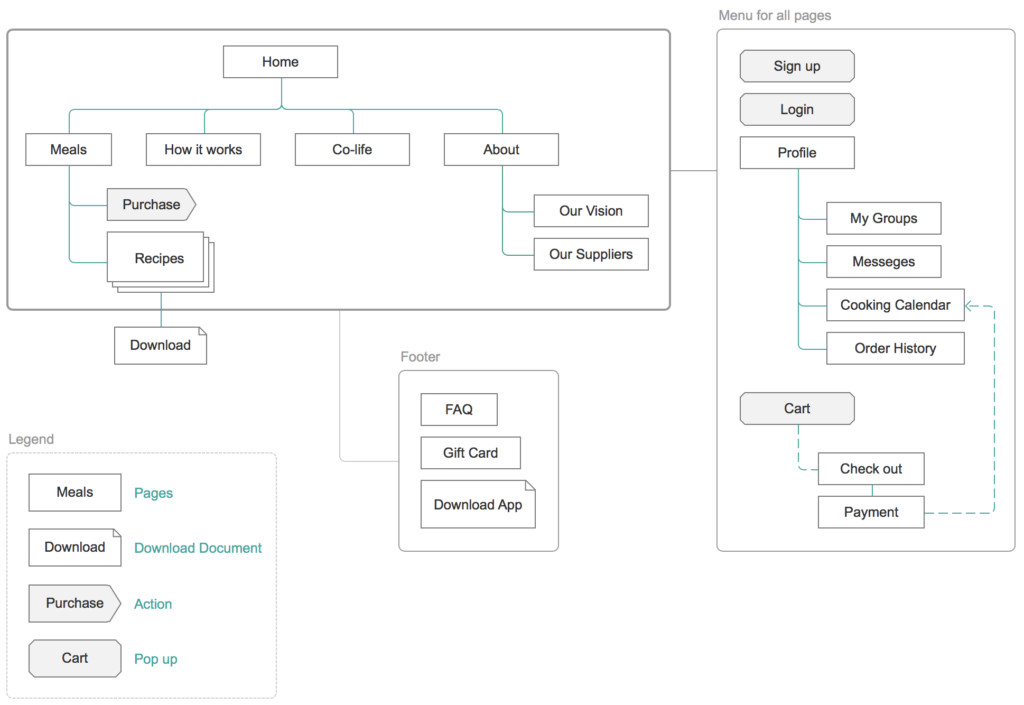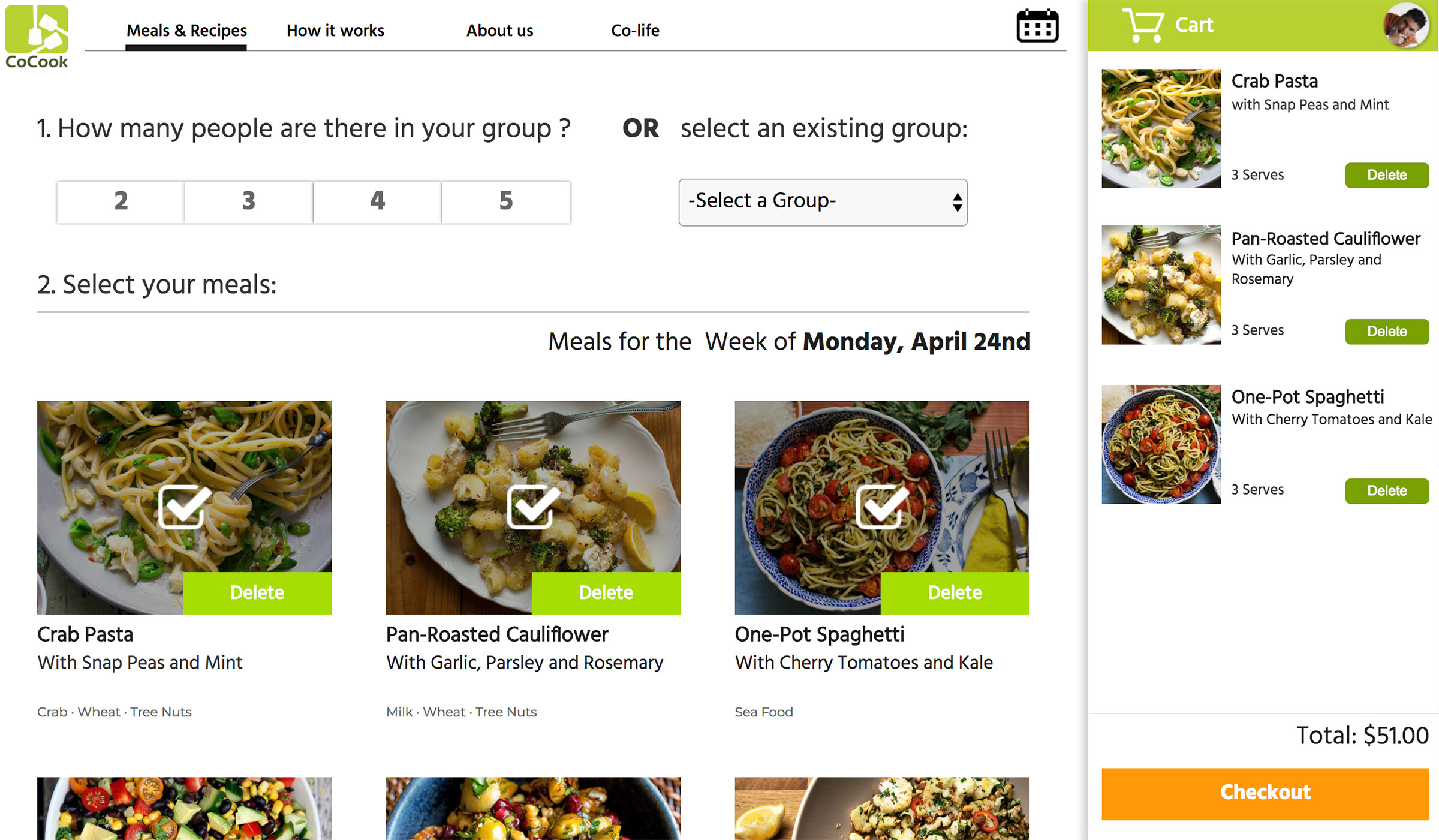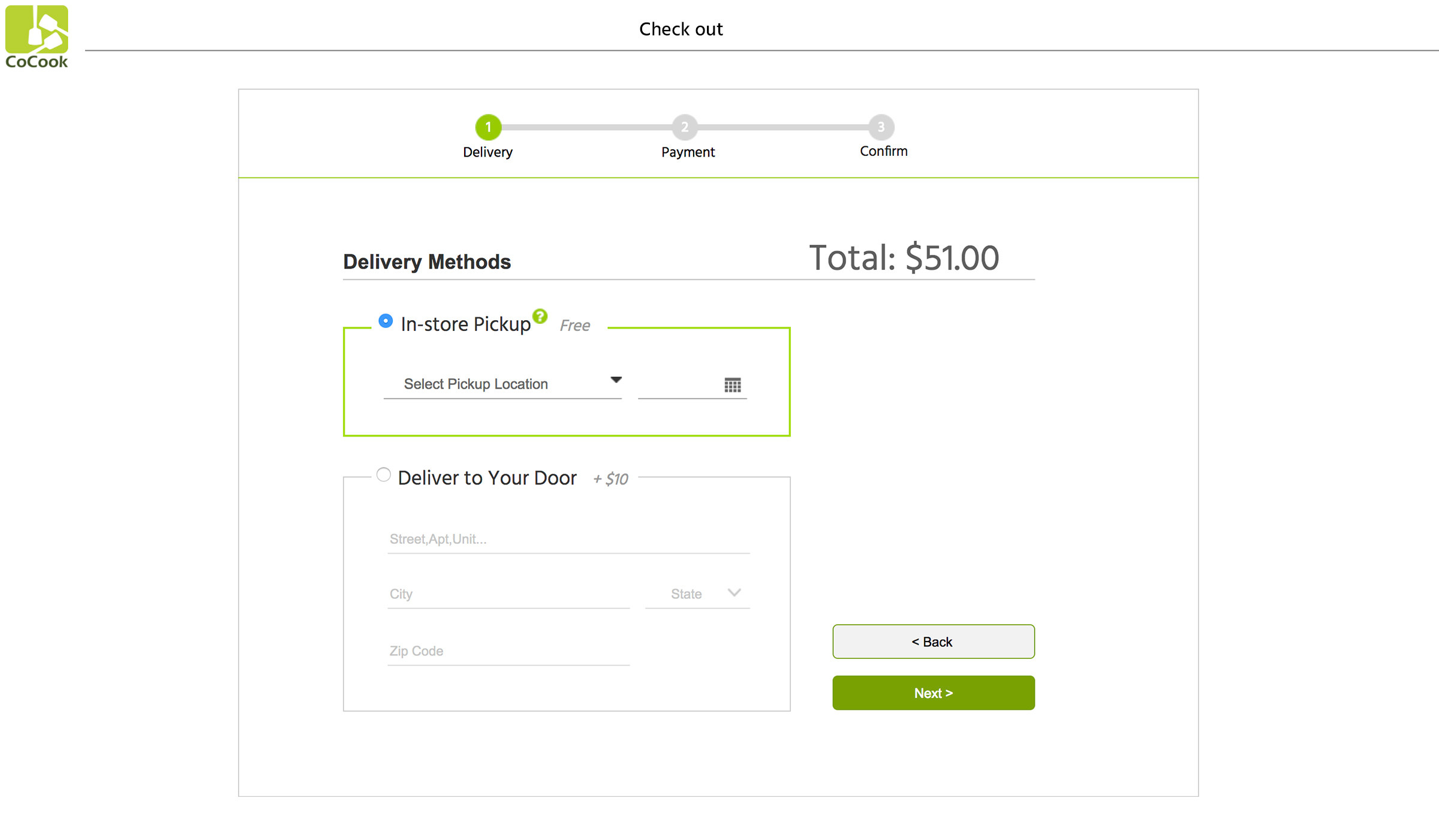[print-me title=”Print this Page” do_not_print=”footer”]
MY ROLE:
- Website Design
- Service Design
- Marketing Strategy
TIME:
Sept. 2016 – May. 2017
This project is part of my thesis, “A Meal Service Design and Marketing Strategy Based on Cooperation and Persuasion Theories,” for the Master of Design degree at University of Cincinnati. For more information, please view the thesis poster: https://aaronyang.me/wp-content/uploads/2023/01/CoCook-poster.pdf.
CoCook is a meal kit service for college students that helps them save time on cooking with an affordable solution.
Prototype: https://cm2w2e.axshare.com/home.html
1. Introduction
This idea came from my personal experience as a graduate student who lived in an apartment with a roommate three years ago. With limited support, I had to cook most of my meals. But, since I took six courses in a semester, I did not have enough time to cook every day. A good solution is to make a big meal during the weekend and eat for several days. As a result, most of my lunches and dinners were not fresh. I started thinking other students might also have the same problems. Maybe, I could solve this problem by design. So, I conducted a survey among some college students and got some feedback. Here is the summary about their meals:
For many students:
- Dining out is expensive.
- They don’t have too much time to cook.
- Many of them are not good at cooking.
- Their meals lack variety.
2. Research
By doing online research, I arrived at a list of solutions for meals. Then I put them into a marketing positioning map with the matrix of expense and effort.
Marketing Positioning Map
3. Proposed Solution
After research, I realized that meal kit service and cooking coop might be the potential solution.
Meal Kit Services
During 2016 to 2018, meal kit services were popular. You can order meals online. Instead of sending you the pre-cooled meals, the service will deliver the prepared materials and the cooking instructions. Then the users cook with the received materials, following the instruction. According to the introduction on their website, anyone could make delicious meals for the family in forty minutes. The cost is lower than dining out.
I tried one of the popular meal kit services with a friend. Here is how we felt.

Cooking Coop
I also found some articles describing a collaborative way of cooking, cooking coop. In that way, people or families banded together, and each of them takes turns to cook for the group.
The combination of the two might be a workable solution for my problems. The following is my proposal. I call it “CoCook.”
- A group of students order meal plans on CoCook online store.
- They receive the prepared materials and cooking instructions from CoCook;
- Each member takes a turn to make the CoCook meals for the group.
Pilot Testing
Following this approach, I invited two friends to join my CoCook group and started a test. I prepared three meals. Each meal has three serves. According to our schedules, each of the group members prepared lunches in three days with the meal kits I prepared. To evaluate the experience of preparing and eating the meals, I conducted a follow-up survey.

To evaluate the experience of preparing and eating the meals, I conducted a follow-up survey.
As shown in following diagram (1= bad, 5 = good), the score of “difficulty”, “time benefit” and “enjoyment” were increased. So, compared to cooking alone, CoCook makes cooking easier, helps user save a lot of time, and brings more enjoyment.

4. User Scenarios
To represent user models and service usage scenarios, I created three personas, a story board, and a customer journey map.
Personas
A persona is a typical representation of an ideal user of a product. To know my users better, I interviewed ten college students. After analyzing their personalities and daily routines, I generated one primary persona and two secondary personas.




Storyboard

Customer Journey Map
The customer journey map demonstrates the users’ behavior and feelings on each stage of their relationship with CoCook. Then, I found the design opportunities for all the stages, which were translated into product design requirements later.

5. Wireframing
For the design process, I followed an event-driven approach, which was inspired by the same concept in software engineering.
Major User Tasks
According to the customer journey map, I found four major tasks that the users need to do in this service:
- Make a group
- Create an account
- Order meals
- Mange cooking
Purchase Flows
To meet each design requirement, following user flows were created:
Information Architecture
Information architecture represents the top-level structure of a website. It shows the map of the web navigation and who should a user find certain information easily.

Wireframes





Low Fidelity Prototype and Usability Testing
To test the proposed system, a low-fidelity prototype was created based on the wireframes. Five participants were invited to the graduate studio to complete six tasks on the prototype, which includes:
- View the information on the home page
- Login to the platform and view the available meals
- Add three meals to the order
- Add two members to the cooking group
- Finish the order and finish payment
- View group information

The testing process of each participant was recorded for further analysis. Most participants can finish all the tasks without difficulty. Based on their feedback, I refined the user interface design and started to create the high-fidelity design.
6. Visual Design






Thank you!
Other Featured Projects
ADL 1-2-3 Device
A gamified system that saves young patients’ lives by finishing daily hygiene activities.
Simple Booking
A space-scheduling system that helped students reserve a space in facilities during the pandemic.
SoDAA Alumni Map
An interactive map that shows the alumni network of NDSU SoDAA.


